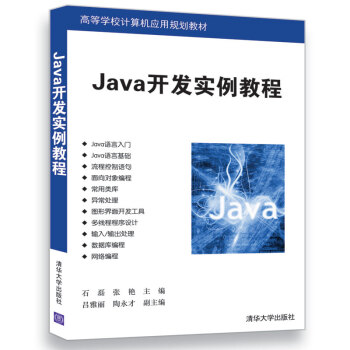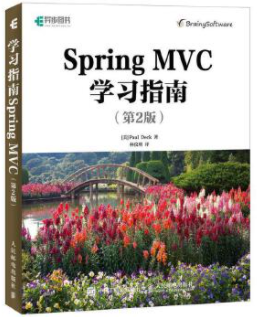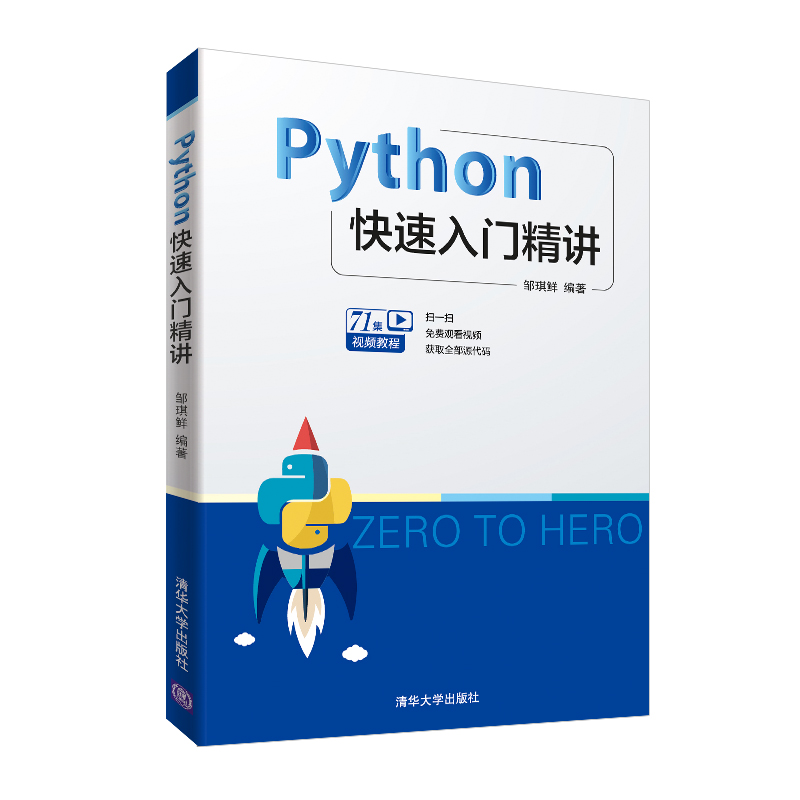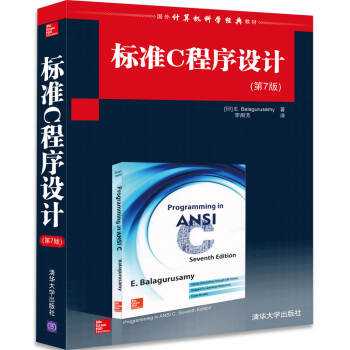双语版C程序设计(Learn C through English and Chinese) / 国外计算机科学教材系列
¥35.00定价
作者: 爱尔兰Paul Kelly,苏小红
出版时间:2013-03
出版社:电子工业出版社
试读
- 电子工业出版社
- 9787121190438
- 1-1
- 39183
- 47151162-6
- 平装
- 16开
- 2013-03
- 499
- 240
- 工学
- 软件工程
- TP312C
- 计算机科学与技术(工学/理学)
- 本科 研究生(硕士、EMBA、MBA、MPA、博士)
内容简介
本书由在计算机程序设计方面有着丰富教学和实践经验的中外作者合作编写。共分14章内容,由浅入深全面介绍C程序设计方法,包括基本数据类型和基本输出输出方式、各种控制结构和语句、指针和数组、字符串、函数、结构、文件输入和输出等内容,最后讨论了C预处理器。本书所有实例经过精心挑选、贴近生活,尤其强调读者的亲自参与意识。每章都为初学者提供了常见错误分析,所选习题可提高读者上机编程的兴趣。本书采用中英文对照混排,既方便初学者熟悉相关概念和内容,也便于英文非母语的读者熟悉英文专业词汇。
目录
目 录
Chapter One Introduction to C(引言) 1
1.1 Brief history of C(C语言简史) 1
1.2 Why programmers use C(为什么程序员爱用C语言) 1
1.2.1 C is portable 1
1.2.2 C is a structured programming language 2
1.2.3 C is efficient 2
1.2.4 C is flexible 2
1.2.5 C is powerful 3
1.2.6 C is concise 3
1.3 Developing a C program(开发C程序) 3
1.4 Suggestions for learning C Programming(学习C语言程序设计的建议) 5
Chapter Two C Data Types(C数据类型) 6
2.1 Constants(常量) 6
2.2 Variables(变量) 6
2.3 Simple output to the screen(简单的屏幕输出) 8
2.4 Comments(注释) 9
2.5 Data types(数据类型) 10
2.5.1 Short integer data types 11
2.5.2 Long integer data types 11
2.5.3 Unsigned integer data types 11
2.5.4 Double floating-point data type 12
2.6 Data type sizes(数据类型的大小) 12
Programming pitfalls 14
Quick syntax reference 15
Exercises 15
Chapter Three Simple Arithmetic Operations and Expressions(简单的算术运算和表达式) 17
3.1 C operators(C运算符) 17
3.1.1 The assignment operator 17
3.1.2 Arithmetic operators 18
3.1.3 Increment and decrement operators 20
3.1.4 Combined operators 23
3.2 Operator precedence(运算符优先级) 24
3.3 Type conversions and casts(类型转换与强制类型转换) 26
Programming pitfalls 28
Quick syntax reference 29
Exercises 29
Chapter Four Keyboard Input and Screen Output(键盘输入和屏幕输出) 32
4.1 Simple keyboard input(简单的键盘输入) 32
4.2 Using a width and precision specification in printf( )
[在函数printf( )中使用域宽和精度说明] 34
4.3 Single-character input and output(单个字符的输入和输出) 35
Programming pitfalls 37
Quick syntax reference 38
Exercises 38
Chapter Five Control Statements: If and Switch(控制语句:if和switch) 40
5.1 The if statement(if语句) 40
5.2 The if-else statement(if-else语句) 41
5.3 Logical operators(逻辑运算符) 43
5.4 Nested if statements(嵌套的if语句) 44
5.5 The switch statement(switch语句) 46
5.6 The conditional operator ?:(条件运算符) 48
Programming pitfalls 50
Quick syntax reference 51
Exercises 52
Chapter Six Iterative Control Statements: while, do-while, and for
(循环控制语句:while、do-while和for) 54
6.1 The while statement(while语句) 54
6.2 The do-while loop(do-while循环) 56
6.3 The for statement(for语句) 57
6.4 Nested loops(嵌套的循环) 59
Programming pitfalls 62
Quick syntax reference 63
Exercises 63
Chapter Seven Arrays(数组) 65
7.1 Introduction to arrays(引言) 65
7.2 Initialising arrays(数组初始化) 71
7.3 Two-dimensional arrays(二维数组) 72
7.4 Initialising two-dimensional arrays(二维数组的初始化) 74
7.5 Multi-dimensional arrays(多维数组) 75
Programming pitfalls 76
Quick syntax reference 76
Exercises 77
Chapter Eight Pointers(指针) 79
8.1 Variable addresses(变量的地址) 79
8.2 Pointer variables(指针变量) 80
8.3 The dereference operator *(解引用运算符*) 81
8.4 Why use pointers? (为什么使用指针) 82
Programming pitfalls 83
Quick syntax reference 83
Exercises 83
Chapter Nine Pointers and Arrays(指针和数组) 85
9.1 Pointers and one-dimensional arrays(指针和一维数组) 85
9.2 Pointers and multi-dimensional arrays(指针和多维数组) 87
9.3 Dynamic memory allocation(动态内存分配) 89
9.3.1 The malloc() function 89
9.3.2 The calloc() function 92
9.3.3 The realloc() function 93
9.3.4 Allocating memory for multi-dimensional arrays 95
Programming pitfalls 98
Exercises 99
Chapter Ten Strings(字符串) 101
10.1 String literals(字符串) 101
10.2 Long character strings(长字符串) 102
10.3 Strings and arrays(字符串和数组) 103
10.4 Displaying a string(显示一个字符串) 104
10.5 The puts() function[puts( )函数] 105
10.6 The gets() function[gets( )函数] 106
10.7 Accessing individual characters of a string(访问字符串中的单个字符) 107
10.8 Assigning a string to a pointer(用字符串为字符指针赋值) 108
10.9 String functions(字符串处理函数) 110
10.9.1 Finding the length of a string 110
10.9.2 Copying a string 110
10.9.3 String concatenation 111
10.9.4 Comparing strings 111
10.9.5 Other string functions 112
10.10 Converting numeric strings to numbers(数值字符串向数值的转换) 113
10.11 Arrays of strings(字符串数组) 114
Programming pitfalls 117
Quick syntax reference 118
Exercises 119
Chapter Eleven Functions(函数) 121
11.1 Introduction(引言) 121
11.2 Function arguments(函数参数) 123
11.3 Returning a value from a function(从函数返回一个值) 126
11.4 Passing arguments by value(按值传参) 128
11.5 Passing arguments by reference(按引用传参) 129
11.6 Changing arguments in a function(在函数中改变实参的值) 130
11.7 Passing a one-dimensional array to a function(向函数传递一维数组) 132
11.8 Passing a multi-dimensional array to a function(向函数传递多维数组) 134
11.9 Storage classes(变量的存储类型) 135
11.9.1 auto 135
11.9.2 static 136
11.9.3 extern 137
11.9.4 register 139
11.10 Command line arguments(命令行参数) 140
11.11 Mathematical functions(数学函数) 142
11.11.1 Some commonly used trigonometric functions 142
11.11.2 Other common mathematical functions 143
11.11.3 Pseudo-random number functions 144
11.11.4 Some time-related functions 144
11.12 Recursion 146
Programming pitfalls 149
Quick syntax reference 150
Exercises 151
Chapter Twelve Structures(结构体) 155
12.1 Defining a structure(定义结构体) 155
12.2 Pointers to structures(结构体指针) 159
12.3 Initialising a structure variable(结构体变量的初始化) 160
12.4 Passing a structure to a function(向函数传递结构体变量) 162
12.5 Nested structures(嵌套的结构体) 164
12.6 Including a structure template from a file(从文件中引用结构体模板) 166
12.7 The typedef statement(typedef语句) 166
12.8 Arrays of structures(结构体数组) 168
12.9 Enumerated data types(枚举数据类型) 174
Programming pitfalls 176
Exercises 178
Chapter Thirteen File Input and Output(文件的输入和输出) 181
13.1 Binary and ASCII (text) files[二进制文件和ASCII(文本)文件] 181
13.2 Opening and closing files(文件的打开和关闭) 182
13.3 Reading a character from a file using fgetc()[使用函数fgetc( )从文件中读字符] 185
13.4 Writing a character to a file using fputc()[使用函数fputc( )向文件中写字符] 186
13.5 Reading a string of characters from a file using fgets()
[使用函数fgets( )从文件中读字符串] 187
13.6 Writing a string of characters to a file using fputs()
[使用函数fputs( )向文件中写入字符串] 189
13.7 Formatted input-output to a file using fscanf() and fprintf()
[使用函数fscanf( )和fprintf( )进行文件的格式化读写] 190
13.8 The standard files(标准文件) 192
13.9 Block input-output using fread() and fwrite()
[使用函数fread()和fwrite( )进行块读写] 193
13.10 Rewinding a file using rewind()[使用函数rewind( )对文件重定位] 195
13.11 Random access of files using fseek()[使用函数fseek( )随机访问文件] 197
13.12 Finding the position in a file using ftell()
[使用函数ftell( )查找文件的当前位置] 203
13.13 Deleting a file using remove()[使用函数remove( )删除文件] 203
Programming pitfalls 204
Quick syntax reference 205
Exercises 206
Chapter Fourteen The C Preprocessor(C编译预处理) 209
14.1 Including files(包含文件) 209
14.2 Defining macros(定义宏) 210
14.3 Macro parameters(带参数的宏) 211
14.4 Macros and functions(宏和函数) 213
14.5 Some useful macros(一些有用的宏) 214
14.6 Conditional directives(条件编译预处理指令) 215
14.7 Character-testing macros(字符检测宏) 216
Programming pitfalls 218
Quick syntax reference 218
Exercises 218
Appendix A List of C Keywords 220
Appendix B Precedence and Associativity of C Operators 221
Appendix C ASCII Character Codes 223
Appendix D Fundamental C Built-in Data Types 225
Chapter One Introduction to C(引言) 1
1.1 Brief history of C(C语言简史) 1
1.2 Why programmers use C(为什么程序员爱用C语言) 1
1.2.1 C is portable 1
1.2.2 C is a structured programming language 2
1.2.3 C is efficient 2
1.2.4 C is flexible 2
1.2.5 C is powerful 3
1.2.6 C is concise 3
1.3 Developing a C program(开发C程序) 3
1.4 Suggestions for learning C Programming(学习C语言程序设计的建议) 5
Chapter Two C Data Types(C数据类型) 6
2.1 Constants(常量) 6
2.2 Variables(变量) 6
2.3 Simple output to the screen(简单的屏幕输出) 8
2.4 Comments(注释) 9
2.5 Data types(数据类型) 10
2.5.1 Short integer data types 11
2.5.2 Long integer data types 11
2.5.3 Unsigned integer data types 11
2.5.4 Double floating-point data type 12
2.6 Data type sizes(数据类型的大小) 12
Programming pitfalls 14
Quick syntax reference 15
Exercises 15
Chapter Three Simple Arithmetic Operations and Expressions(简单的算术运算和表达式) 17
3.1 C operators(C运算符) 17
3.1.1 The assignment operator 17
3.1.2 Arithmetic operators 18
3.1.3 Increment and decrement operators 20
3.1.4 Combined operators 23
3.2 Operator precedence(运算符优先级) 24
3.3 Type conversions and casts(类型转换与强制类型转换) 26
Programming pitfalls 28
Quick syntax reference 29
Exercises 29
Chapter Four Keyboard Input and Screen Output(键盘输入和屏幕输出) 32
4.1 Simple keyboard input(简单的键盘输入) 32
4.2 Using a width and precision specification in printf( )
[在函数printf( )中使用域宽和精度说明] 34
4.3 Single-character input and output(单个字符的输入和输出) 35
Programming pitfalls 37
Quick syntax reference 38
Exercises 38
Chapter Five Control Statements: If and Switch(控制语句:if和switch) 40
5.1 The if statement(if语句) 40
5.2 The if-else statement(if-else语句) 41
5.3 Logical operators(逻辑运算符) 43
5.4 Nested if statements(嵌套的if语句) 44
5.5 The switch statement(switch语句) 46
5.6 The conditional operator ?:(条件运算符) 48
Programming pitfalls 50
Quick syntax reference 51
Exercises 52
Chapter Six Iterative Control Statements: while, do-while, and for
(循环控制语句:while、do-while和for) 54
6.1 The while statement(while语句) 54
6.2 The do-while loop(do-while循环) 56
6.3 The for statement(for语句) 57
6.4 Nested loops(嵌套的循环) 59
Programming pitfalls 62
Quick syntax reference 63
Exercises 63
Chapter Seven Arrays(数组) 65
7.1 Introduction to arrays(引言) 65
7.2 Initialising arrays(数组初始化) 71
7.3 Two-dimensional arrays(二维数组) 72
7.4 Initialising two-dimensional arrays(二维数组的初始化) 74
7.5 Multi-dimensional arrays(多维数组) 75
Programming pitfalls 76
Quick syntax reference 76
Exercises 77
Chapter Eight Pointers(指针) 79
8.1 Variable addresses(变量的地址) 79
8.2 Pointer variables(指针变量) 80
8.3 The dereference operator *(解引用运算符*) 81
8.4 Why use pointers? (为什么使用指针) 82
Programming pitfalls 83
Quick syntax reference 83
Exercises 83
Chapter Nine Pointers and Arrays(指针和数组) 85
9.1 Pointers and one-dimensional arrays(指针和一维数组) 85
9.2 Pointers and multi-dimensional arrays(指针和多维数组) 87
9.3 Dynamic memory allocation(动态内存分配) 89
9.3.1 The malloc() function 89
9.3.2 The calloc() function 92
9.3.3 The realloc() function 93
9.3.4 Allocating memory for multi-dimensional arrays 95
Programming pitfalls 98
Exercises 99
Chapter Ten Strings(字符串) 101
10.1 String literals(字符串) 101
10.2 Long character strings(长字符串) 102
10.3 Strings and arrays(字符串和数组) 103
10.4 Displaying a string(显示一个字符串) 104
10.5 The puts() function[puts( )函数] 105
10.6 The gets() function[gets( )函数] 106
10.7 Accessing individual characters of a string(访问字符串中的单个字符) 107
10.8 Assigning a string to a pointer(用字符串为字符指针赋值) 108
10.9 String functions(字符串处理函数) 110
10.9.1 Finding the length of a string 110
10.9.2 Copying a string 110
10.9.3 String concatenation 111
10.9.4 Comparing strings 111
10.9.5 Other string functions 112
10.10 Converting numeric strings to numbers(数值字符串向数值的转换) 113
10.11 Arrays of strings(字符串数组) 114
Programming pitfalls 117
Quick syntax reference 118
Exercises 119
Chapter Eleven Functions(函数) 121
11.1 Introduction(引言) 121
11.2 Function arguments(函数参数) 123
11.3 Returning a value from a function(从函数返回一个值) 126
11.4 Passing arguments by value(按值传参) 128
11.5 Passing arguments by reference(按引用传参) 129
11.6 Changing arguments in a function(在函数中改变实参的值) 130
11.7 Passing a one-dimensional array to a function(向函数传递一维数组) 132
11.8 Passing a multi-dimensional array to a function(向函数传递多维数组) 134
11.9 Storage classes(变量的存储类型) 135
11.9.1 auto 135
11.9.2 static 136
11.9.3 extern 137
11.9.4 register 139
11.10 Command line arguments(命令行参数) 140
11.11 Mathematical functions(数学函数) 142
11.11.1 Some commonly used trigonometric functions 142
11.11.2 Other common mathematical functions 143
11.11.3 Pseudo-random number functions 144
11.11.4 Some time-related functions 144
11.12 Recursion 146
Programming pitfalls 149
Quick syntax reference 150
Exercises 151
Chapter Twelve Structures(结构体) 155
12.1 Defining a structure(定义结构体) 155
12.2 Pointers to structures(结构体指针) 159
12.3 Initialising a structure variable(结构体变量的初始化) 160
12.4 Passing a structure to a function(向函数传递结构体变量) 162
12.5 Nested structures(嵌套的结构体) 164
12.6 Including a structure template from a file(从文件中引用结构体模板) 166
12.7 The typedef statement(typedef语句) 166
12.8 Arrays of structures(结构体数组) 168
12.9 Enumerated data types(枚举数据类型) 174
Programming pitfalls 176
Exercises 178
Chapter Thirteen File Input and Output(文件的输入和输出) 181
13.1 Binary and ASCII (text) files[二进制文件和ASCII(文本)文件] 181
13.2 Opening and closing files(文件的打开和关闭) 182
13.3 Reading a character from a file using fgetc()[使用函数fgetc( )从文件中读字符] 185
13.4 Writing a character to a file using fputc()[使用函数fputc( )向文件中写字符] 186
13.5 Reading a string of characters from a file using fgets()
[使用函数fgets( )从文件中读字符串] 187
13.6 Writing a string of characters to a file using fputs()
[使用函数fputs( )向文件中写入字符串] 189
13.7 Formatted input-output to a file using fscanf() and fprintf()
[使用函数fscanf( )和fprintf( )进行文件的格式化读写] 190
13.8 The standard files(标准文件) 192
13.9 Block input-output using fread() and fwrite()
[使用函数fread()和fwrite( )进行块读写] 193
13.10 Rewinding a file using rewind()[使用函数rewind( )对文件重定位] 195
13.11 Random access of files using fseek()[使用函数fseek( )随机访问文件] 197
13.12 Finding the position in a file using ftell()
[使用函数ftell( )查找文件的当前位置] 203
13.13 Deleting a file using remove()[使用函数remove( )删除文件] 203
Programming pitfalls 204
Quick syntax reference 205
Exercises 206
Chapter Fourteen The C Preprocessor(C编译预处理) 209
14.1 Including files(包含文件) 209
14.2 Defining macros(定义宏) 210
14.3 Macro parameters(带参数的宏) 211
14.4 Macros and functions(宏和函数) 213
14.5 Some useful macros(一些有用的宏) 214
14.6 Conditional directives(条件编译预处理指令) 215
14.7 Character-testing macros(字符检测宏) 216
Programming pitfalls 218
Quick syntax reference 218
Exercises 218
Appendix A List of C Keywords 220
Appendix B Precedence and Associativity of C Operators 221
Appendix C ASCII Character Codes 223
Appendix D Fundamental C Built-in Data Types 225










